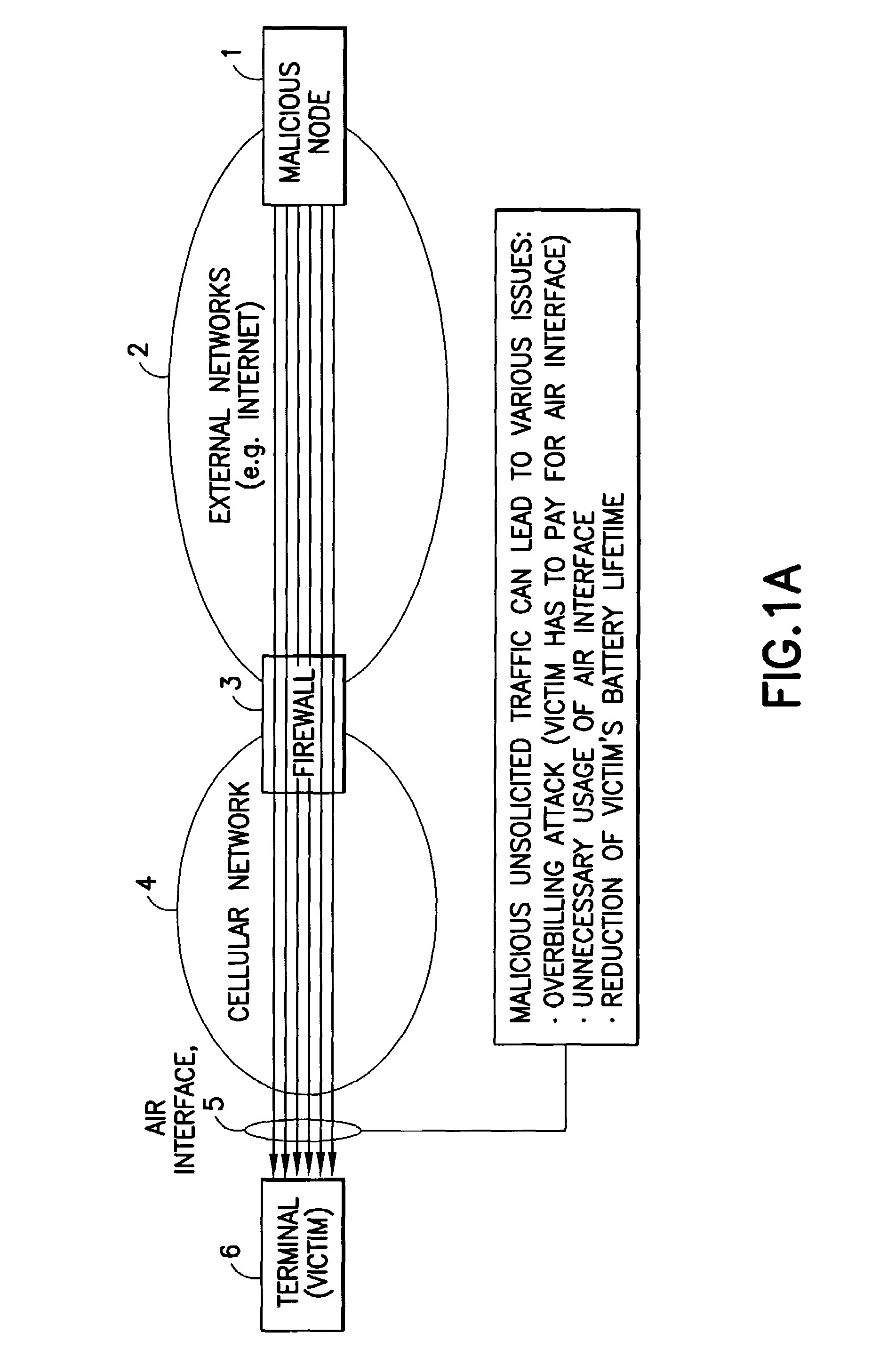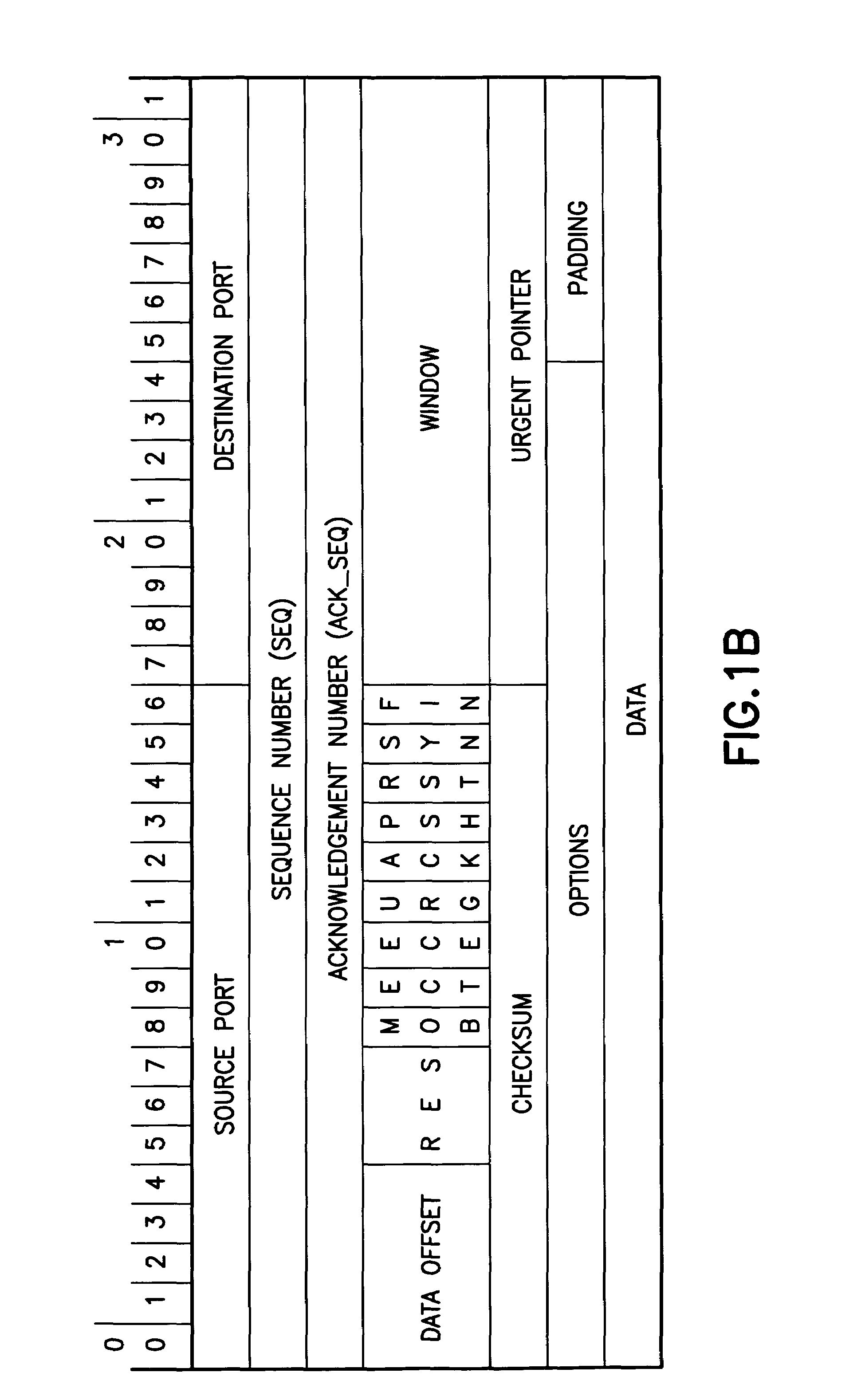Apparatus, method and computer program product to reduce TCP flooding attacks while conserving wireless network bandwidth
a technology of wireless network and wireless network, applied in the field of communication network security procedures, can solve the problems of increasing the risk of new attacks, or even more vulnerable to current existing ones, and the air interface of cellular networks is a scarce, limited and expensive resource that a user is required to pay, and the effect of many undesired effects for both the subscriber and the operator
- Summary
- Abstract
- Description
- Claims
- Application Information
AI Technical Summary
Benefits of technology
Problems solved by technology
Method used
Image
Examples
Embodiment Construction
[0036]As will be made apparent below, the embodiments of this invention address the problems that were discussed above, and define methods, apparatus and a computer program product to reduce malicious incoming traffic, and to drop the incoming malicious traffic at the network, thus conserving valuable air interface while protecting both the network operator and the subscriber to, or the user of, the network. While the embodiments of this invention may relate most particularly to 3GPP2 standards, these embodiments are not restricted to cdma2000 networks, and are generally applicable to other types of networks.
[0037]The embodiments of this invention provide methods, apparatus and a computer program product to reduce an occurrence of attacks that reach wireless terminals, and focus particularly on TCP. The embodiments of this invention beneficially reduce occurrences of DoS attacks, such as those that use TCP SYN with a forged source IP address.
[0038]The term “firewall” is considered h...
PUM
 Login to View More
Login to View More Abstract
Description
Claims
Application Information
 Login to View More
Login to View More - R&D
- Intellectual Property
- Life Sciences
- Materials
- Tech Scout
- Unparalleled Data Quality
- Higher Quality Content
- 60% Fewer Hallucinations
Browse by: Latest US Patents, China's latest patents, Technical Efficacy Thesaurus, Application Domain, Technology Topic, Popular Technical Reports.
© 2025 PatSnap. All rights reserved.Legal|Privacy policy|Modern Slavery Act Transparency Statement|Sitemap|About US| Contact US: help@patsnap.com



